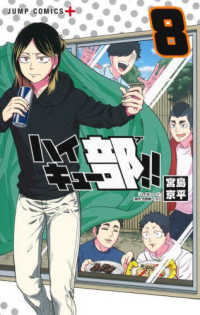- ホーム
- > 洋書
- > 英文書
- > Politics / International Relations
Full Description
The book discusses landmine warfare today, looking at its impact on international relations, local populations, and humanitarian intervention since the 1997 Ottawa Mine Ban Treaty. In 1997, several nations signed the Ottawa Treaty, also called the Mine Ban Treaty. However, the landmine-free world it envisaged by 2010 has yet to come. This book seeks out to explain why. To do so, it looks at the concept and impact of landmines from an international relations, security, and international law perspective and how landmines affect local populations. It discusses the absence of major signatories to the treaty such as the US, Russia, and China, as well as the use of landmines to this date by some of the signatory countries. It also explains how some humanitarian interventions, such as Mine Risk Education programs, can be misguided and produce unwanted effects, creating for example fear in populations that are not directly at risk. Goldsworthy, a scholar and clearance specialist, offers a balanced account of this key disarmament issue. He presents all facets of the global landmine issue, including concepts, theory, methodology, and case studies.
This unique work will be a must read for anyone studying conflict processes and international relations.
Contents
Part I - Landmine Warfare; 1. Landmines: A Concept in Warfare or an Evil That Men Do?; 2. The history and Orientalisation of Landmine Warfare in Non-Western Intra-State Conflict; 3. Landmines and International Relations Theory; 4. Landmines and the Human Security Paradigm; 5. The Role of Landmines in Ethnic Cleansing; 6. Gender Perspective on the Psychosocial Impact of Mine Warfare in Rural Communities; 7. Mine Risk Education (MRE) - Stigmatizing the Victim or Terrifying the Innocent?; 8. The ICBL: Promoting Global Democracy?; 9. The Impact of Cluster Munitions against Humanitarian Interventions; Part II Methodology; 10. The Evidence to Justify Humanitarian Mine Action; 11. Modeling a Research Method for Measuring the Impact of Humanitarian Land Mine Action in Sri Lanka; 12. The Funnel Model: Creating a Sterile Laboratory Environment for Social Science Research Under Field Conditions; 13. Qualitative and Quantitative Research Outcomes for the Measurement of the Impact to Local Communities of Humanitarian Mine Action (HMA) in Sri Lanka; 14. A New System Design for the Post-Clearance Impact Assessment (PCIA) Systems to Measure the Effectiveness of HMA Interventions; Part III Case Studies; 15. Angola, Ottawa, Arms Control and the Failure of Faith; 16. The Myth of El Salvador and its Unique Landmine Free Status; 17. The Impact of Cluster Munitions Contamination in Kosovo; 18. The MK and Their Decision to Stop Using Landmines in 1985.






